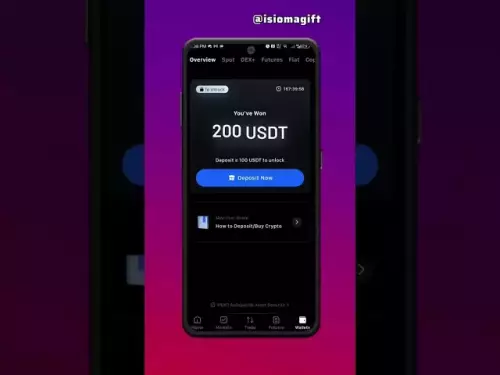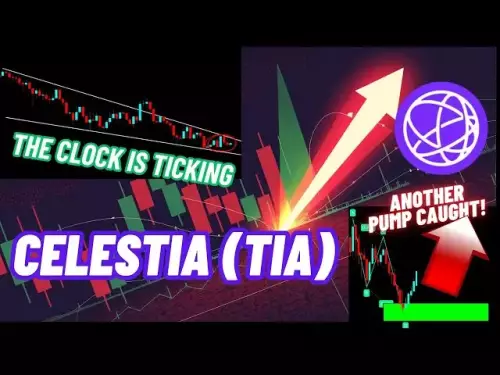-
 Bitcoin
Bitcoin $109800
0.96% -
 Ethereum
Ethereum $4462
-0.28% -
 Tether USDt
Tether USDt $1.000
0.01% -
 XRP
XRP $2.821
-0.71% -
 BNB
BNB $861.7
0.16% -
 Solana
Solana $202.1
-1.48% -
 USDC
USDC $1.000
0.03% -
 Dogecoin
Dogecoin $0.2184
0.01% -
 TRON
TRON $0.3411
-0.35% -
 Cardano
Cardano $0.8371
0.97% -
 Chainlink
Chainlink $23.72
-0.38% -
 Hyperliquid
Hyperliquid $45.31
1.40% -
 Ethena USDe
Ethena USDe $1.001
0.03% -
 Sui
Sui $3.324
-0.19% -
 Stellar
Stellar $0.3621
0.40% -
 Bitcoin Cash
Bitcoin Cash $547.2
-0.56% -
 Avalanche
Avalanche $24.23
0.46% -
 Cronos
Cronos $0.2828
-3.05% -
 Hedera
Hedera $0.2226
-1.80% -
 UNUS SED LEO
UNUS SED LEO $9.611
0.32% -
 Litecoin
Litecoin $110.7
-0.96% -
 Toncoin
Toncoin $3.157
0.51% -
 Shiba Inu
Shiba Inu $0.00001250
0.45% -
 Polkadot
Polkadot $3.851
0.19% -
 Uniswap
Uniswap $9.753
-1.24% -
 Dai
Dai $0.9999
0.00% -
 Bitget Token
Bitget Token $4.570
0.11% -
 Monero
Monero $268.2
2.03% -
 Aave
Aave $316.7
-1.64% -
 Ethena
Ethena $0.6473
-4.43%
Why does Trust Wallet say "no connection"?
Trust Wallet's "no connection" error usually stems from internet issues, incorrect network settings, or server outages, preventing transactions and balance updates.
Sep 01, 2025 at 09:37 am

Understanding the 'No Connection' Error in Trust Wallet
1. The 'no connection' message in Trust Wallet typically appears when the app cannot establish a stable link to blockchain networks. This issue prevents users from viewing balances, sending tokens, or interacting with decentralized applications. Network connectivity problems are often the root cause, but the error can stem from various sources ranging from device settings to backend service disruptions.
2. One of the most common triggers is an unstable internet connection. Trust Wallet relies on real-time data from blockchain nodes, and any interruption in Wi-Fi or mobile data can sever this communication. Users might still see the app interface, but without a live connection, transaction confirmations and balance updates fail to load.
3. Another reason is incorrect network settings within the wallet. If the custom RPC configurations for Ethereum, Binance Smart Chain, or other networks are misconfigured, the wallet will not be able to reach the required nodes. This often happens after users experiment with adding testnets or third-party node providers.
4. Server-side issues from Trust Wallet’s infrastructure or their node providers like Infura or Alchemy can also trigger the error. These services occasionally face downtime or rate-limiting, especially during periods of high network congestion, which directly impacts wallet functionality.
5. Background app restrictions on smartphones may prevent Trust Wallet from maintaining an active connection. Android and iOS devices often limit background data usage to preserve battery life, which can interfere with the wallet’s ability to sync with the blockchain continuously.
How to Fix Internet and Device-Related Issues
1. Begin by verifying your internet connection. Switch between Wi-Fi and mobile data to determine if one is more stable. Loading a blockchain explorer website can confirm whether the issue is isolated to the app or affects broader connectivity.
2. Restart the Trust Wallet application completely. Close it from the recent apps menu and reopen it. This often resolves temporary glitches that disrupt network handshakes.
3. Reboot your mobile device. A full system restart clears cached processes that might interfere with network permissions or app functionality.
4. Ensure that your device’s date and time settings are set to automatic. Incorrect system time can cause SSL certificate validation failures, which block secure connections to blockchain APIs.
5. Disable battery optimization for Trust Wallet. On Android, go to Settings > Apps > Trust Wallet > Battery, and set it to “Unrestricted.” On iOS, ensure background app refresh is enabled for the wallet under Settings > General > Background App Refresh.
Adjusting Wallet and Network Settings
1. Check the active network in Trust Wallet. Tap the network selector (usually showing “Ethereum” or “BNB Smart Chain”) and confirm you’re on the correct mainnet. Accidentally switching to a testnet can result in zero balances and connection errors.
2. Reset custom RPCs if you’ve added any. Navigate to Settings > Wallet > Network Management, select the affected chain, and remove any user-defined nodes. Revert to the default configuration provided by Trust Wallet.
3. Clear the app cache. On Android, go to Settings > Apps > Trust Wallet > Storage > Clear Cache. On iOS, uninstall and reinstall the app—ensure your recovery phrase is backed up before doing so.
4. Update Trust Wallet to the latest version. Older versions may have deprecated API endpoints or compatibility issues with current blockchain protocols. Visit the App Store or Google Play to install updates.
5. Toggle DApp browser settings. Sometimes the internal browser’s connection modules conflict with wallet sync. Go to Settings > DApps and disable the feature temporarily to test if core wallet functions recover.
When the Problem Persists: Advanced Checks
1. Test with a different wallet using the same seed phrase. Import your account into another non-custodial wallet like MetaMask to determine if the issue is specific to Trust Wallet or related to your network environment.
2. Monitor Trust Wallet’s official social media channels. The team often posts service status updates on Twitter or Telegram when backend nodes are experiencing outages.
3. Use a different DNS provider. Changing your network’s DNS to Google DNS (8.8.8.8) or Cloudflare (1.1.1.1) can bypass ISP-level restrictions or routing issues affecting blockchain API access.
4. Avoid using public Wi-Fi or corporate networks with firewalls. These networks often block ports used by blockchain services. Use a personal hotspot or trusted network instead.
5. Contact Trust Wallet support with detailed logs. Include your device model, OS version, wallet version, and screenshots of the error. While response times vary, providing technical details increases the chance of a targeted solution.
Frequently Asked Questions
Why does Trust Wallet show no connection even with strong Wi-Fi?The app may be blocked by firewall settings, or the blockchain node it relies on could be down. Also, background restrictions or incorrect system time can disrupt secure connections even with strong signal strength.
Can a VPN cause connection issues in Trust Wallet?Yes. Some VPNs route traffic through servers that block or throttle connections to blockchain APIs. Switching to a different server or disabling the VPN temporarily can restore functionality.
Does clearing cache delete my crypto in Trust Wallet?No. Clearing the app cache only removes temporary data. Your funds are secured by your private keys, which are derived from your recovery phrase. As long as you have the phrase, your assets remain safe.
Why does the connection fail only for certain blockchains?Trust Wallet uses different node providers for each network. A failure in one chain—like Ethereum—may not affect BNB Smart Chain if they rely on separate backend services. Check each network individually in settings.
Disclaimer:info@kdj.com
The information provided is not trading advice. kdj.com does not assume any responsibility for any investments made based on the information provided in this article. Cryptocurrencies are highly volatile and it is highly recommended that you invest with caution after thorough research!
If you believe that the content used on this website infringes your copyright, please contact us immediately (info@kdj.com) and we will delete it promptly.
- Memecoins September 2025 Watchlist: What's Hot Now?
- 2025-08-31 23:25:15
- Eric Trump Predicts Bitcoin to $1 Million: Hype or Reality?
- 2025-08-31 23:25:15
- BlockDAG: Redefining Scalability and ROI Potential in 2025
- 2025-08-31 23:05:16
- Ozak AI, Altcoins, and 20x Potential: Navigating the Crypto Landscape
- 2025-09-01 00:05:12
- Bonk Price, Solana Meme Coin, and the Rise of Layer Brett: A New Era?
- 2025-08-31 21:25:12
- ETH Transactions Soar, BTC Whale Shifts Gears: Decoding August's Crypto Charts
- 2025-08-31 21:05:16
Related knowledge

How to use Trust Wallet's built-in DEX?
Aug 29,2025 at 07:28am
Understanding Trust Wallet’s Built-in DEX1. Trust Wallet integrates a decentralized exchange (DEX) directly within its mobile application, allowing us...
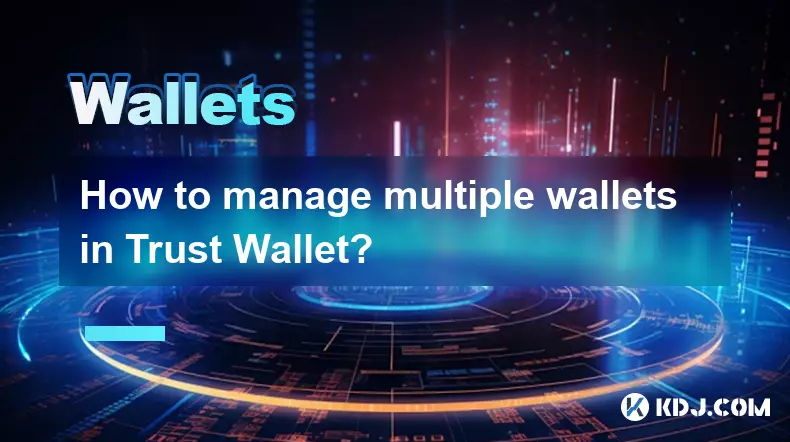
How to manage multiple wallets in Trust Wallet?
Aug 30,2025 at 04:45am
Understanding Wallet Management in Trust Wallet1. Trust Wallet supports a wide range of cryptocurrencies and tokens, allowing users to manage multiple...
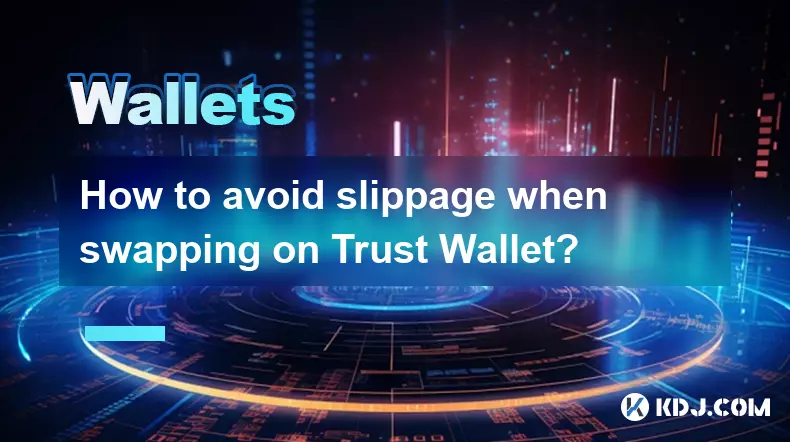
How to avoid slippage when swapping on Trust Wallet?
Aug 29,2025 at 03:01am
Understanding Slippage in Decentralized Exchanges1. Slippage occurs when the price of a cryptocurrency changes between the time a transaction is initi...
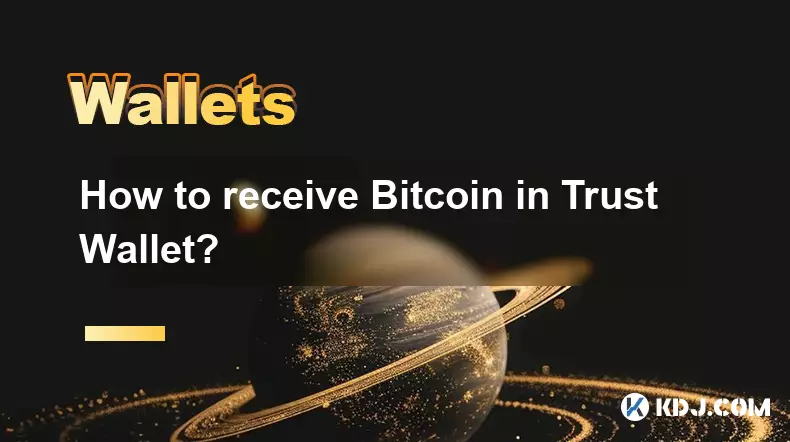
How to receive Bitcoin in Trust Wallet?
Aug 31,2025 at 08:36pm
Understanding Bitcoin Reception in Trust Wallet1. Trust Wallet supports Bitcoin (BTC) as one of its core cryptocurrencies. To receive Bitcoin, users m...

How to send Ethereum from Trust Wallet?
Sep 01,2025 at 01:55pm
Sending Ethereum from Trust Wallet: A Step-by-Step GuideTrust Wallet is one of the most widely used cryptocurrency wallets, especially for users who p...
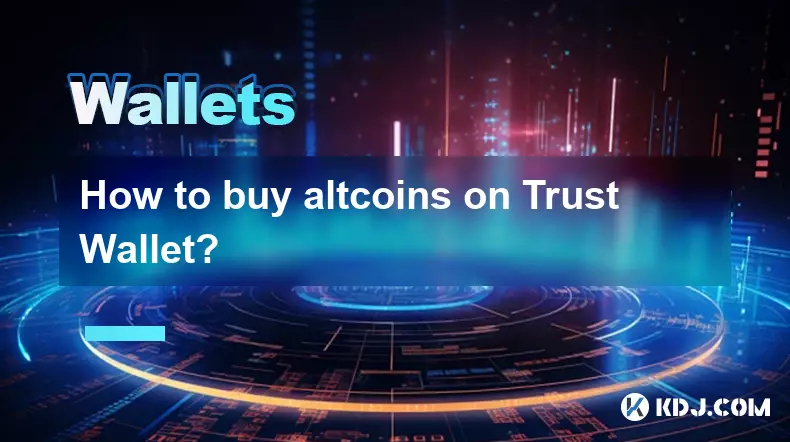
How to buy altcoins on Trust Wallet?
Aug 29,2025 at 11:36pm
Understanding Trust Wallet and Altcoin Purchases1. Trust Wallet is a non-custodial cryptocurrency wallet that supports a wide range of altcoins and bl...

How to use Trust Wallet's built-in DEX?
Aug 29,2025 at 07:28am
Understanding Trust Wallet’s Built-in DEX1. Trust Wallet integrates a decentralized exchange (DEX) directly within its mobile application, allowing us...

How to manage multiple wallets in Trust Wallet?
Aug 30,2025 at 04:45am
Understanding Wallet Management in Trust Wallet1. Trust Wallet supports a wide range of cryptocurrencies and tokens, allowing users to manage multiple...

How to avoid slippage when swapping on Trust Wallet?
Aug 29,2025 at 03:01am
Understanding Slippage in Decentralized Exchanges1. Slippage occurs when the price of a cryptocurrency changes between the time a transaction is initi...

How to receive Bitcoin in Trust Wallet?
Aug 31,2025 at 08:36pm
Understanding Bitcoin Reception in Trust Wallet1. Trust Wallet supports Bitcoin (BTC) as one of its core cryptocurrencies. To receive Bitcoin, users m...

How to send Ethereum from Trust Wallet?
Sep 01,2025 at 01:55pm
Sending Ethereum from Trust Wallet: A Step-by-Step GuideTrust Wallet is one of the most widely used cryptocurrency wallets, especially for users who p...

How to buy altcoins on Trust Wallet?
Aug 29,2025 at 11:36pm
Understanding Trust Wallet and Altcoin Purchases1. Trust Wallet is a non-custodial cryptocurrency wallet that supports a wide range of altcoins and bl...
See all articles























